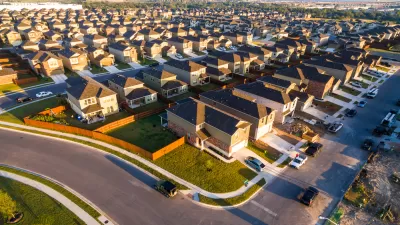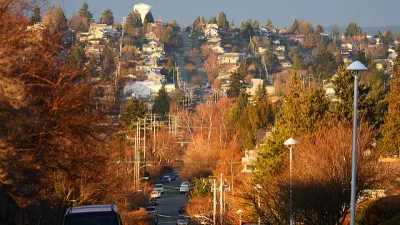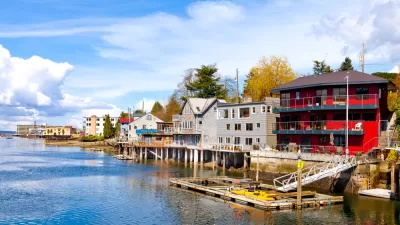Few housing markets serve as a better case study about the politics and effects of housing supply than Seattle. A local writer takes a deeper look at the city's total development over the past year and comes to some surprising conclusions.
Ethan Phelps-Goodman takes a look back at the development year that transpired in Seattle, finding that appearances don't tell the whole story. According to Phelps-Goodman, that is, all those construction cranes dotting the city skyline don't mean that 2015 was a pace-setting year for construction: "housing production is actually set to decline this year as compared to the year before."
More specifically:
"Extrapolating from numbers published by the City of Seattle for the first three quarters of 2015, housing production for this year will be about 6,800 units (although an end of the year surge is certainly possible). That’s about equal to 2013 levels, but off significantly from the 8,300 units produced in 2014."
Phelps-Goodman notes that the city's development environment suffers from a problem of perception. So while production of single-family homes, townhouses, and small apartments increased more than 20 percent, construction of midrise buildings dropped from 3,800 units to a projected 2,700 units this year. Phelps-Goodman also notes that the perception problem is also a question of location, with neighborhoods like Capitol Hill, First Hill, the U-District, and Columbia City adding lots of units, while South Lake Union, Northgate, Queen Anne, Ballard, Green Lake, and Roosevelt had a "paucity" of projects.
It's also worth noting that the city data cited by Phelps-Goodman produces a narrative that contradicts a story pushed in November, in which landlords lamented a "tsunami" of rental units coming online in the region over the past several years, slowing the growth of media rents.
FULL STORY: Despite perceptions, housing production down in 2015, single family home construction up

Montreal Mall to Become 6,000 Housing Units
Place Versailles will be transformed into a mixed-use complex over the next 25 years.

Planetizen Federal Action Tracker
A weekly monitor of how Trump’s orders and actions are impacting planners and planning in America.

Four Reasons Urban Planners Can’t Ignore AI
It’s no longer a question of whether AI will shape planning, but how. That how is up to us.

NYC Council Approves Brooklyn Rezoning Plan
The Atlantic Avenue Mixed Use Plan includes infrastructure investments and could bring 4,600 new housing units to parts of Brooklyn.

Tenant Advocates: Rent Gouging Rampant After LA Wildfires
The Rent Brigade says it's found evidence of thousands of likely instances of rent gouging. In some cases, the landlords accused of exploiting the fires had made campaign donations to those responsible for enforcement.

Seattle’s Upzoning Plan is Ambitious, Light on Details
The city passed a ‘bare-bones’ framework to comply with state housing laws that paves the way for more middle housing, but the debate over how and where to build is just getting started.
Urban Design for Planners 1: Software Tools
This six-course series explores essential urban design concepts using open source software and equips planners with the tools they need to participate fully in the urban design process.
Planning for Universal Design
Learn the tools for implementing Universal Design in planning regulations.
City of Camden Redevelopment Agency
City of Astoria
Transportation Research & Education Center (TREC) at Portland State University
City of Camden Redevelopment Agency
Municipality of Princeton (NJ)
Regional Transportation Commission of Southern Nevada





























